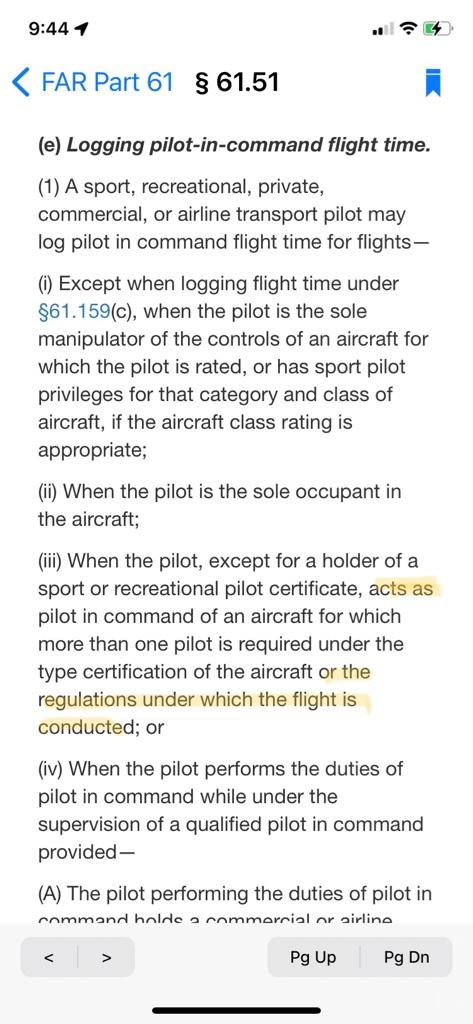Hi. I have 107 hours, 10 of which are PIC and 5.2XC PIC.
I'm already a private pilot and looking to get Instrument, Commercial, and CFI, along with Multi engine possibly.
Here is my issue though. I need 44.8 hours more XC PIC to qualify for the 50 hours XC PIC needed to get instrument rated. I also will need one 250nm xc instrument flight.
I also will need 40 hours of simulated instruction for instrument.
I'm trying to understand, how I can reach 250 hours as cost efficiently as possible.
And for commercial, I need 100 hours total PIC, and 10 hours instrument and 10 hours complex aircraft time.
During instrument training, with a flight instructor, am I the PIC or is the instructor PIC? If I can combine XC time while also receiving instruction, it would be beneficial for me. Same with commercial. Can I act as PIC during instrument and commercial instruction?
Because to qualify for commercial, I need 100 hours PIC, so that means I need 90 hours more PIC, meaning I'll total out to 197 hours.
Instrument requires 40 hours minimum correct. That puts me at 237 hours. Commercial requires 20 hours minimum putting me at 257 hours. CFI also requires 20 hours putting me at 277.
I'm trying to combine all the elements required simultaneously. For example, any night flying, instrument flying, PIC flying, I want to combine as many things as possible so I don't have to do extra hours.
What about splitting time with another student? Would that count as PIC?
And again, training for instrument or commercial, will I be PIC or is the instructor in command? Because if I can be PIC training for instruments I can get PIC time AND simultaneously knock down the 40 hours required for instrument, which is my goal.
Can anyone who's gone through all this give an effective breakdown of what my next hours should be and look like?
I'm already a private pilot and looking to get Instrument, Commercial, and CFI, along with Multi engine possibly.
Here is my issue though. I need 44.8 hours more XC PIC to qualify for the 50 hours XC PIC needed to get instrument rated. I also will need one 250nm xc instrument flight.
I also will need 40 hours of simulated instruction for instrument.
I'm trying to understand, how I can reach 250 hours as cost efficiently as possible.
And for commercial, I need 100 hours total PIC, and 10 hours instrument and 10 hours complex aircraft time.
During instrument training, with a flight instructor, am I the PIC or is the instructor PIC? If I can combine XC time while also receiving instruction, it would be beneficial for me. Same with commercial. Can I act as PIC during instrument and commercial instruction?
Because to qualify for commercial, I need 100 hours PIC, so that means I need 90 hours more PIC, meaning I'll total out to 197 hours.
Instrument requires 40 hours minimum correct. That puts me at 237 hours. Commercial requires 20 hours minimum putting me at 257 hours. CFI also requires 20 hours putting me at 277.
I'm trying to combine all the elements required simultaneously. For example, any night flying, instrument flying, PIC flying, I want to combine as many things as possible so I don't have to do extra hours.
What about splitting time with another student? Would that count as PIC?
And again, training for instrument or commercial, will I be PIC or is the instructor in command? Because if I can be PIC training for instruments I can get PIC time AND simultaneously knock down the 40 hours required for instrument, which is my goal.
Can anyone who's gone through all this give an effective breakdown of what my next hours should be and look like?

 )
)
